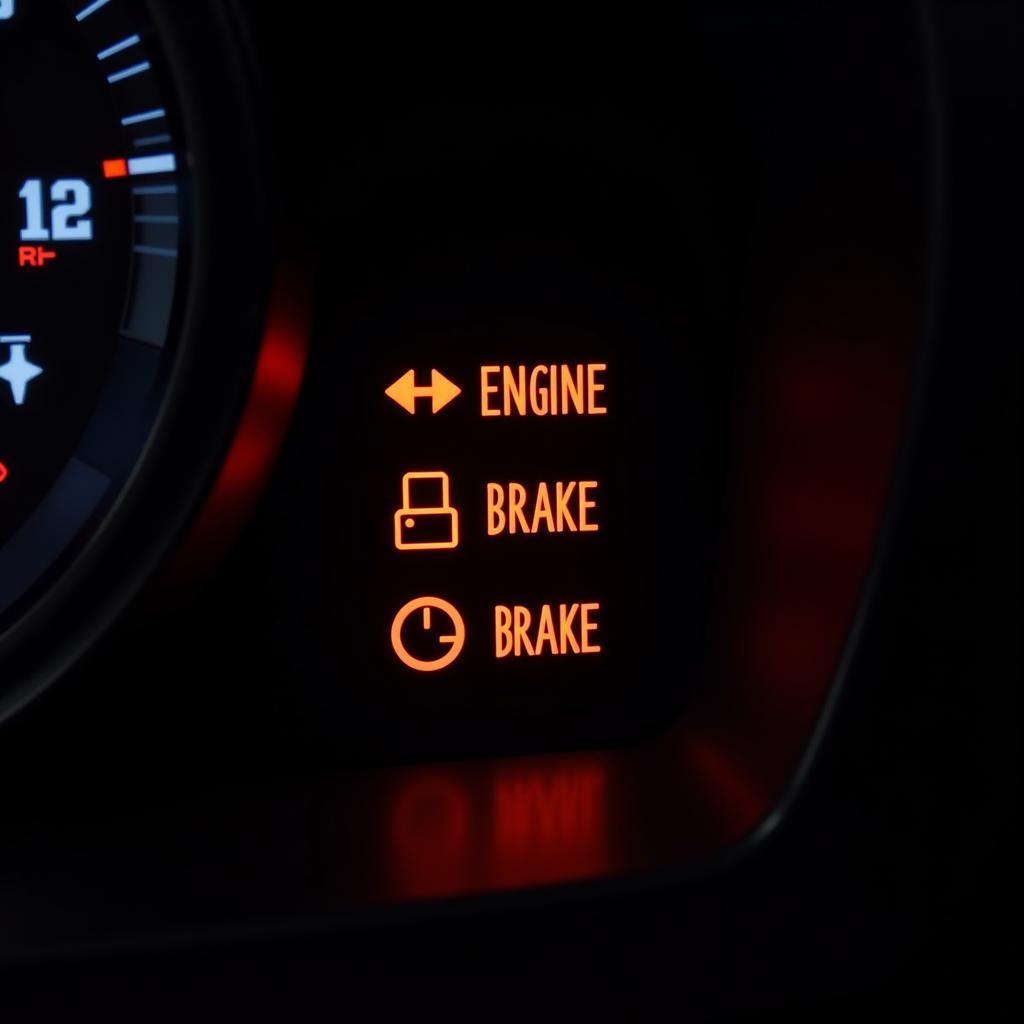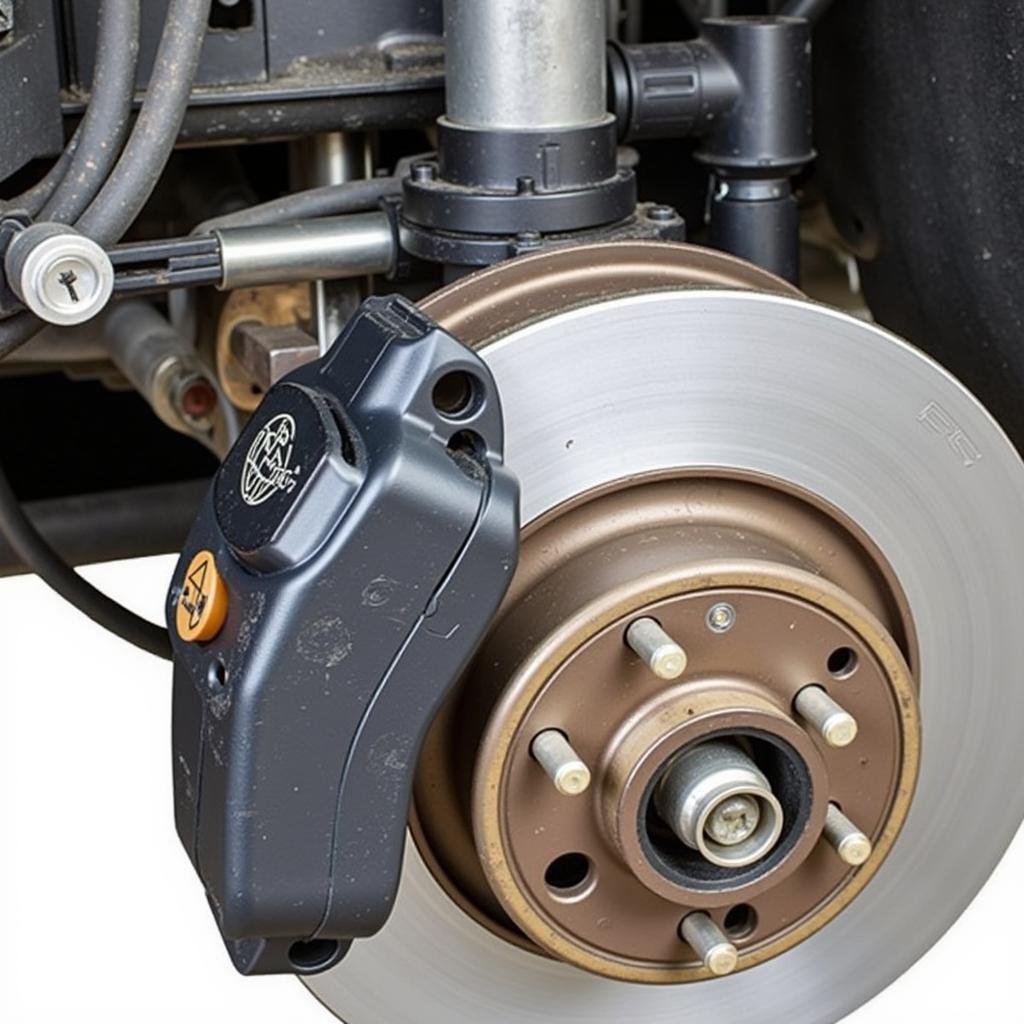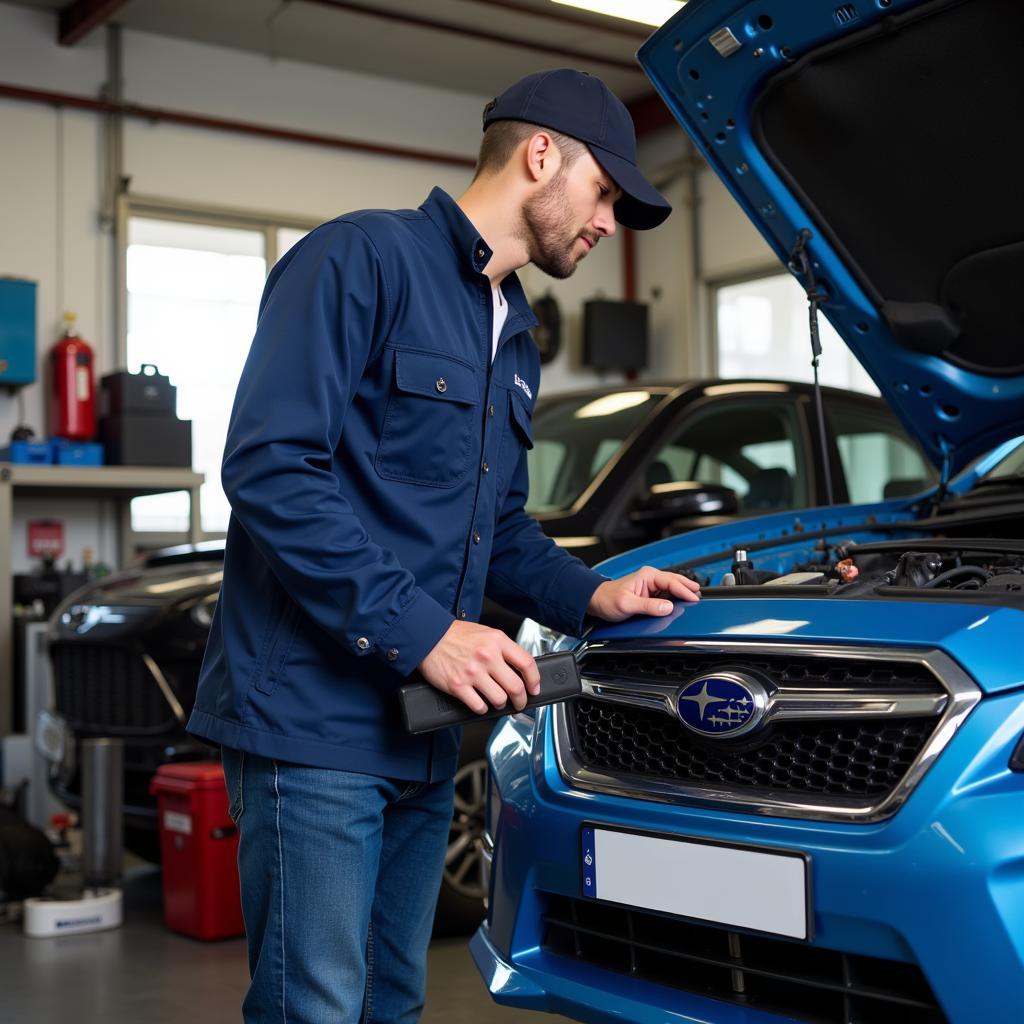Imagine this: you’re driving your trusty Subaru, cruising along, when suddenly, a trio of warning lights on your dashboard decides to have a party. The brake light, the engine light, and the cruise control light are all flashing in unison. Naturally, this unexpected light show is a cause for concern. It’s your car’s way of telling you something is wrong and needs attention. So, what does it mean when these specific lights decide to throw a rave on your dashboard? Let’s dive into the common culprits and how you can troubleshoot this issue.
Decoding the Warning Light Symphony
Seeing your Subaru’s brake, engine, and cruise control lights flashing simultaneously usually points to a few potential issues. While it might seem intimidating, understanding what each light signifies can help you narrow down the source of the problem.
- Brake System Issues: The blinking brake light often indicates a problem within your Subaru’s braking system. This could be anything from low brake fluid to a malfunctioning brake light switch.
- Engine Control Malfunction: The check engine light, your car’s general indicator of engine trouble, could be signaling a variety of issues, from a misfire to a faulty sensor.
- Cruise Control System Fault: While the blinking cruise control light might seem less urgent, it often goes hand-in-hand with the other two warning lights in this scenario. It could suggest a problem with the cruise control system itself or a broader electrical issue affecting multiple systems.
 Subaru Dashboard Warning Lights
Subaru Dashboard Warning Lights
Common Culprits Behind the Blinking Lights
Now that we understand what each light broadly represents let’s explore some of the most frequent culprits behind this warning light trio:
1. Low Brake Fluid
One of the most straightforward explanations for the blinking brake light is low brake fluid. Brake fluid is essential for transmitting the force you apply to the brake pedal to the actual brakes.
Troubleshooting Tip: Check your brake fluid level. It’s located in a reservoir under the hood. If it’s low, top it off with the recommended brake fluid for your Subaru model.
Important Note: If you find yourself adding brake fluid frequently, it’s crucial to have your braking system inspected by a qualified mechanic. Consistent loss of brake fluid could indicate a leak, which requires immediate attention.
2. Faulty Wheel Speed Sensor
Modern Subarus rely heavily on wheel speed sensors for various safety and performance features, including the anti-lock braking system (ABS) and Vehicle Dynamics Control (VDC). If one or more wheel speed sensors malfunction, it can trigger a cascade of warning lights, including those pesky blinking lights we’re discussing.
Troubleshooting Tip: Unfortunately, diagnosing a faulty wheel speed sensor often requires a specialized scanner that can read the codes stored in your car’s computer. If you suspect a wheel speed sensor issue, it’s best to visit a mechanic.
 Subaru Wheel Speed Sensor Close-up
Subaru Wheel Speed Sensor Close-up
3. Throttle Position Sensor Problems
The throttle position sensor (TPS) plays a vital role in managing your Subaru’s engine performance. It tells the engine control unit (ECU) how far you’re pressing the accelerator pedal. A faulty TPS can disrupt the air-fuel mixture, leading to performance issues and triggering the check engine light.
Troubleshooting Tip: While replacing a TPS isn’t a DIY job for everyone, checking the wiring and connections for any loose or damaged parts can be done at home.
4. Oxygen Sensor Malfunction
Your Subaru’s oxygen sensors monitor the exhaust gases to ensure the engine is burning fuel efficiently. A failing oxygen sensor can negatively impact fuel economy, increase emissions, and potentially cause the check engine light to illuminate.
Troubleshooting Tip: Similar to wheel speed sensors, oxygen sensors are best diagnosed using a scanner that can read your car’s error codes.
5. Battery or Alternator Issues
Believe it or not, even something as seemingly unrelated as a dying battery or a faulty alternator can trigger those flashing lights on your dashboard. Your car’s electrical system powers those crucial sensors and systems. When the electrical system is compromised, it can lead to a cascade of warning lights.
Troubleshooting Tip: If you suspect a battery or alternator problem, have them tested by a qualified mechanic.
When to Seek Professional Help
While some of the troubleshooting tips mentioned above can be tackled by handy car owners, it’s important to recognize when it’s time to bring in the pros. If your Subaru’s warning lights persist after basic checks or if you’re uncomfortable tackling more complex diagnoses, don’t hesitate to seek assistance from a qualified mechanic specializing in Subaru vehicles.
“Don’t ignore those flashing lights,” advises John Smith, a seasoned Subaru mechanic with over 20 years of experience. “They are your car’s way of telling you something is wrong. Addressing the issue sooner rather than later can often prevent more costly repairs down the line.”
 Subaru Mechanic Diagnosing a Vehicle
Subaru Mechanic Diagnosing a Vehicle
Conclusion: Keeping Your Subaru Happy and Healthy
A flashing brake light, engine light, and cruise control light on your Subaru’s dashboard can be alarming, but it’s usually a sign of a solvable issue. By understanding what these lights signify and performing some basic troubleshooting, you can often pinpoint the culprit. However, don’t hesitate to seek professional help from a qualified Subaru mechanic when needed.
